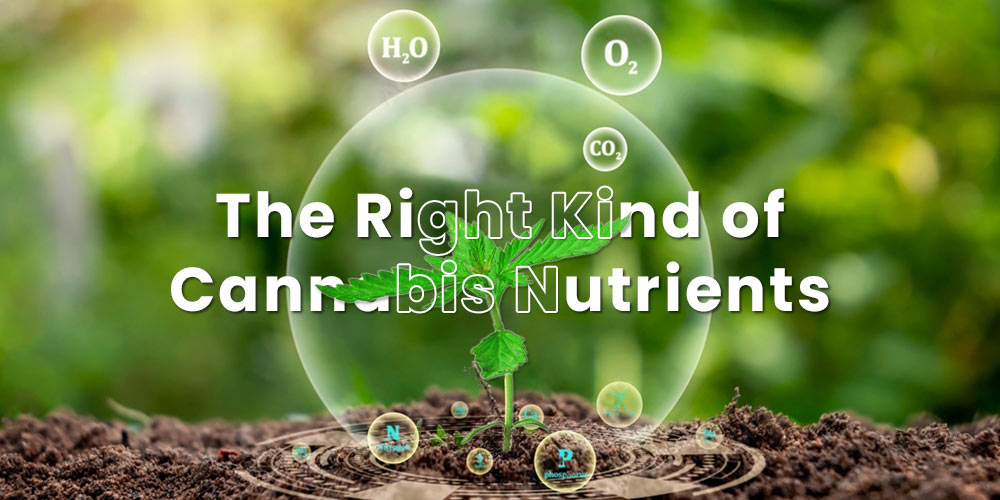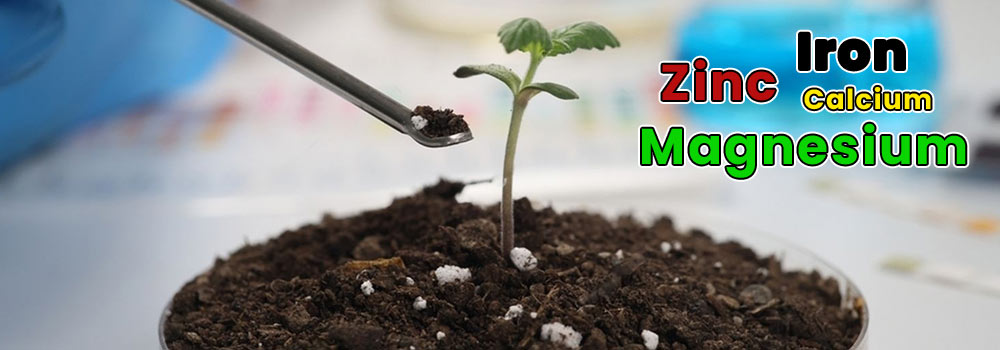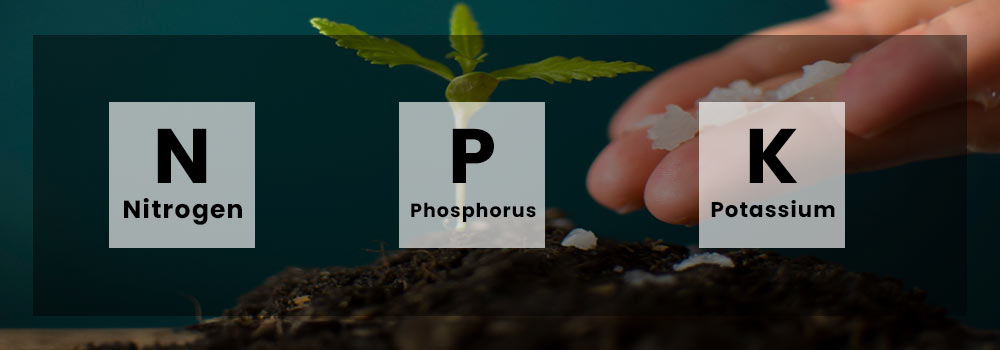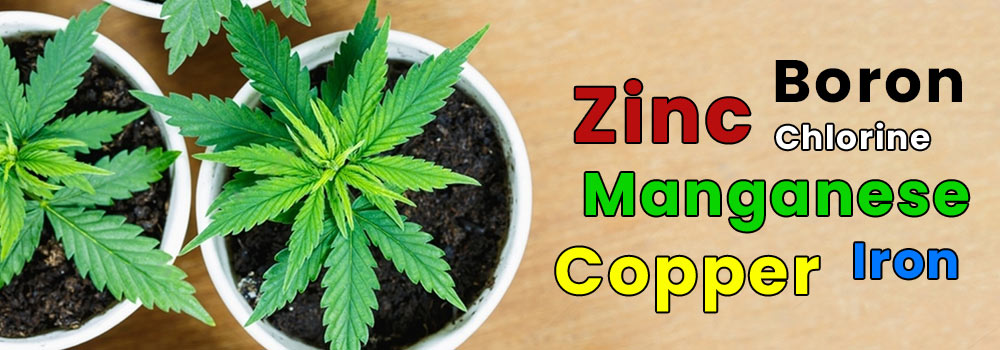Mastering the art of preventing cannabis deficiencies can be quite a complex task. The process involves considering multiple factors, and it’s all too easy to make crucial mistakes along the way. We understand these challenges firsthand, having experienced them ourselves.
Given our experiences, we have dedicated our efforts to compile a straightforward guide that aims to assist you in steering clear of cannabis plant deficiencies. By reading further, you will gain invaluable insights into the fundamental aspects of cultivating cannabis, particularly in relation to nutrient management. Implementing the knowledge gained from this guide will undoubtedly contribute to the optimal health and prosperity of your cannabis plants, leading to bountiful yields and overall plant satisfaction.
What Nutrients does your Cannabis Plant Need?
Premium cannabis fertilizers consist of essential nutrients, namely nitrogen (N), phosphorus (P), and potassium (K), which play a vital role in promoting the healthy growth and development of cannabis plants. Understanding when your plants require these specific nutrients is key to maintaining their well-being. Here are some indicators to help you identify deficiencies:
Cannabis Nitrogen Deficiency: When your cannabis plant lacks sufficient nitrogen, its leaves may appear pale or light green in color. Over time, these leaves may gradually turn yellow, curl, and eventually drop off. Nitrogen deficiency negatively affects the plant’s ability to produce chlorophyll, resulting in stunted growth and reduced vigor.
Cannabis Phosphorus Deficiency: Insufficient phosphorus can manifest as dark spotting on the older leaves of your cannabis plant. As the deficiency progresses, the affected leaves may exhibit a dull or dark green color, and the plant’s overall growth may slow down. Phosphorus is crucial for energy transfer and plays a vital role in promoting root development, flower formation, and overall plant vitality.
Cannabis Potassium Deficiency: When your cannabis plant lacks adequate potassium, you may notice the tips of the leaves turning dark or brown, resembling burnt edges. Additionally, the plant may exhibit weak stems and reduced overall growth. Potassium is responsible for various essential functions in plants, including nutrient uptake, water regulation, and enzyme activation.
Monitoring your cannabis plants for these telltale signs of nutrient deficiencies is crucial in addressing and rectifying the issue promptly. By providing the appropriate fertilizers containing the necessary levels of nitrogen, phosphorus, and potassium, you can ensure that your cannabis plants receive the optimal nutrient balance they need to thrive and yield abundant, healthy flowers.
What are the Viable Macronutrients needed?
Cannabis macronutrients play a crucial role in the overall health and development of cannabis plants. These essential elements, such as iron, zinc, magnesium, and calcium, are considered valuable components of a well-rounded cannabis nutrient blend. Let’s take a closer look at each of these macronutrients and their significance:
Iron: Iron is an essential micronutrient that aids in various metabolic processes within cannabis plants. It is a critical component of enzymes involved in chlorophyll production, facilitating photosynthesis. Iron deficiency can lead to yellowing of leaves, a condition known as chlorosis, and negatively impact the plant’s ability to carry out vital functions.
Zinc: Zinc is another micronutrient that contributes to the overall growth and development of cannabis plants. It plays a role in enzyme activity and helps regulate various plant hormones. Zinc deficiency may cause stunted growth, reduced leaf size, and impaired nutrient absorption.
Magnesium: Magnesium is a primary macronutrient that is essential for chlorophyll synthesis. It acts as a central atom in the chlorophyll molecule and is crucial for photosynthesis. Magnesium deficiency can result in yellowing between leaf veins, leading to an overall decline in plant health.
Calcium: Calcium is a critical nutrient for cannabis plants as it helps build strong cell walls, promotes root development, and enhances overall structural integrity. It aids in nutrient uptake and transport within the plant. Calcium deficiency can lead to stunted growth, necrosis in young leaves, and increased susceptibility to diseases.
What is NPK Ratio?
The NPK ratio refers to the relative concentrations of nitrogen (N), phosphorus (P), and potassium (K) present in a cannabis nutrient blend, expressed as a percentage by volume. It is a crucial factor to consider when selecting a fertilizer or nutrient formula for your cannabis plants. Each of these nutrients serves specific functions in the growth and development of cannabis, and their proportions can greatly impact plant health and productivity.
The NPK ratio is typically represented as three numbers separated by dashes, such as 10-5-5 or 3-12-6. Each number corresponds to the percentage by volume of nitrogen, phosphorus, and potassium in the nutrient blend, respectively. The ratio indicates the relative proportions of these three primary nutrients.
Different stages of cannabis growth may require varying NPK ratios. During the vegetative phase, higher nitrogen levels are generally preferred to support vigorous foliage growth. As the plant transitions to the flowering stage, a nutrient blend with a higher phosphorus content is often recommended to encourage robust bud development.
Understanding the NPK ratio of your cannabis nutrient blend allows you to tailor your plant’s nutritional needs based on its growth stage. It helps ensure that your plants receive the appropriate balance of nutrients to promote healthy growth, maximize yields, and optimize the overall quality of your cannabis harvest.
What are the Viable Micronutrients needed?
While cannabis plants require macronutrients in larger quantities, micronutrients are equally vital for their physiological processes. Even though micronutrient deficiencies in cannabis are relatively rare, their absence can impede the plant’s ability to achieve healthy yields and potent qualities.
To identify when cannabis plants require micronutrients, here are some key indicators for specific deficiencies:
Boron: Insufficient boron can cause spotting on new leaves, as well as abnormal or thick growth at the tips of the plant.
Chlorine: A lack of chlorine may lead to yellowing leaves, wilting, and the development of stubby roots.
Copper: Copper deficiency can be identified when the leaves have a shiny appearance or exhibit dark blue or purple undertones.
Iron: Inadequate iron levels can result in the appearance of yellow new shoots and leaves.
Manganese: A deficiency of manganese can cause yellowing leaves that rapidly turn brown.
Molybdenum: Molybdenum deficiency is characterized by leaves turning orange, red, or pink around the edges.
Zinc: Insufficient zinc may prevent fresh leaves from properly opening up, and buds can become loose and fragile.
Monitoring your cannabis plants for these specific symptoms can help you identify potential micronutrient deficiencies. While such deficiencies are relatively uncommon, providing the appropriate micronutrient supplementation can help ensure that your plants receive the necessary elements for optimal growth, robust yields, and high potency.
It’s important to note that when addressing micronutrient deficiencies, it’s crucial to diagnose the issue accurately through careful observation and potentially conducting soil or tissue tests. Once a deficiency is confirmed, targeted supplementation or adjustments to the nutrient regimen can be implemented to rectify the imbalance and promote the overall health and productivity of your cannabis plants.






















